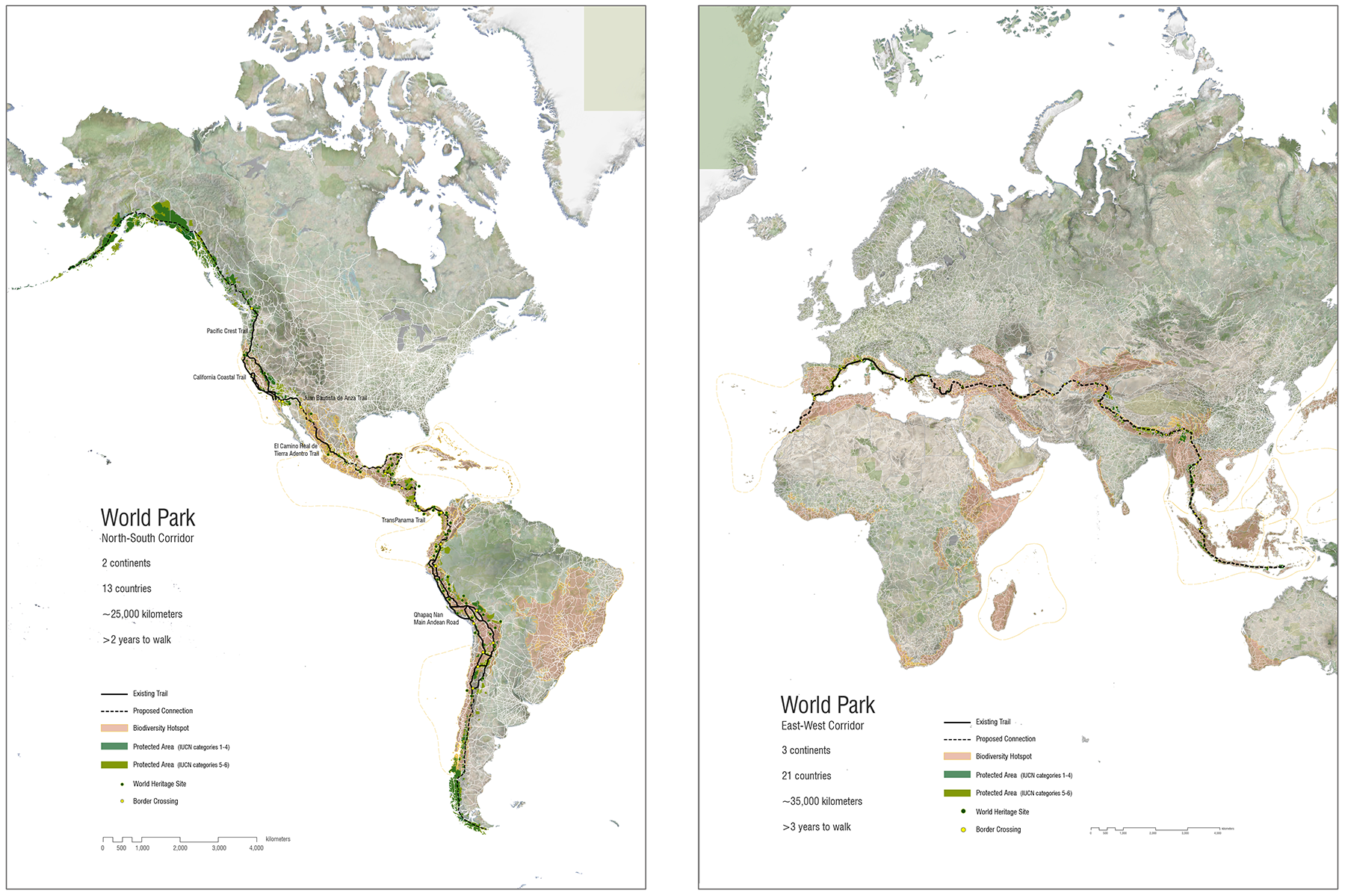If National Parks were the crowing conservation achievement of the 19th and 20th century reflecting a time where nation-states were the predominant political unit, then surely the IUCN's ever-increasing list of protected areas amounts to a new form of 'World Park' borne of 21st century global culture. Be that as it may, the 'hotspots' in which the world's most valuable and most threatened biodiversity is corralled remain fragmented both within and across national borders and are highly vulnerable to the geo-political contingencies of sovereign rule.
What then, if we were to consider linking the world's most biodiverse and threatened landscapes into one contiguous World Park replete with appropriate governance and funding to not only protect but also reconnect what remains? If the project of reconnecting these landscapes was coupled with trails and related infrastructure to support eco-tourism the World Park could become a 21st century pilgrimage route attracting people willing to not only look at the wilderness hotspots we have left but more importantly, get their hands dirty and help build some more.
The map shows this World Park linked through 2 continuous trails, one running north–south from Alaska to Patagonia and the other east–west from Indonesia to Morocco. The formation of these two trails are of course wildly improbable; but then, so too is every other form of global connectivity humans have constructed.
